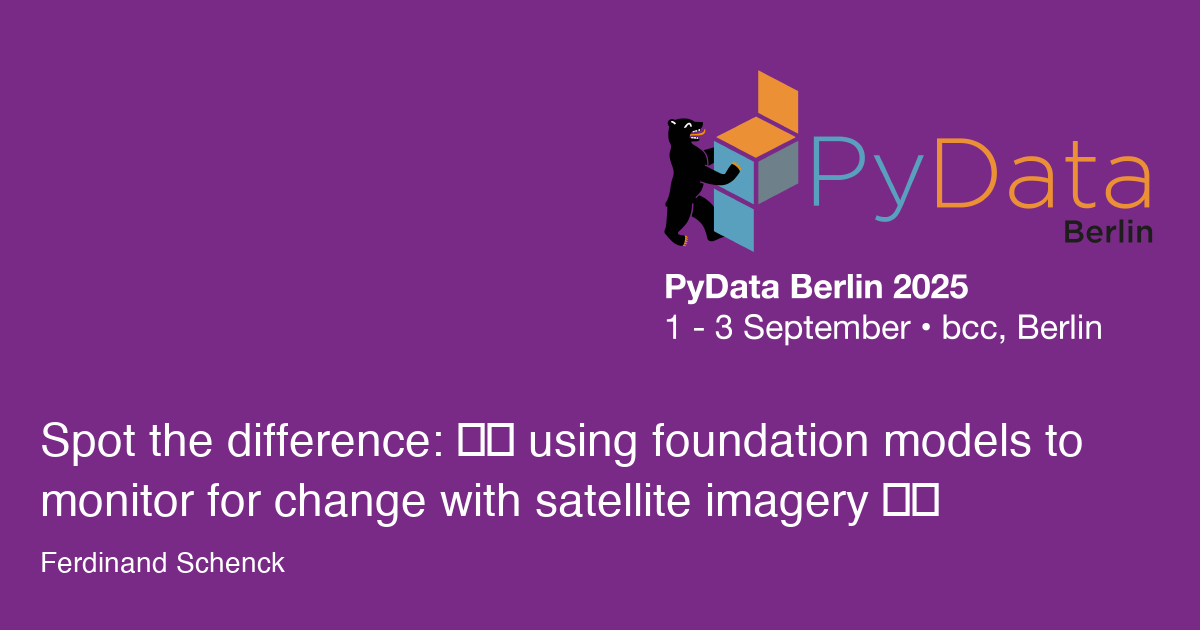PyData Berlin
Spot the difference: 🕵️ using foundation models to monitor for change with satellite imagery 🛰️
Talk

Abstract
Energy infrastructure is vulnerable to damage by erosion or third party interference, which often takes the form of unsanctioned construction. In this talk we discuss our experiences using deep learning algorithms powered by large foundation models to monitor for changes in bi-temporal very-high resolution satellite imagery.
Prerequisites
A basic understanding of ML is useful, but not required. No experience with satellite imagery is expected.
Description
Oil and gas pipelines are usually buried around 1.5 meters underground, making them vulnerable to human activity or natural processes like erosion. Pipeline operators need to perform regular checks to ensure the integrity of their infrastructure. Very High Resolution (VHR) satellite images, with ground sampling distances of less than 1 meter, provide an interesting solution to this problem allowing for large scale monitoring and regular revisit rates.
Spotting changes is far from simple, as one needs to distinguish between relevant changes (such as construction activity), and irrelevant changes, such as shadows, seasonal changes or changes due to viewing angles.
Geospatial foundation models, trained on vast collections of satellite imagery from across the globe, offer enhanced generalisation capabilities while requiring relatively few labels to achieve powerful performance. This global-scale pretraining enables these models to develop robust feature representations that transfer effectively to new geographic regions and tasks.
Speaker
Ferdinand Schenck
Staff Machine Learning Engineer
Machine Learning Engineer at LiveEO | Recovering Physicist | Spends most of his time making machines understand the world from space.